Sailboat Keel Types Compared: Pros and Cons of 13 Types
There are various keel designs, each with specific advantages and disadvantages. For instance, full keels provide better stability and tracking, making them a popular choice for long-distance cruisers. On the other hand, fin keels enable sharper turns and quicker reactions, which appeal to racers and those seeking a more nimble experience. Choosing the right keel type for your sailboat depends on your sailing preferences, cruising goals, and intended destinations.
A sailboat's keel plays a significant role in its overall stability, performance, and comfort. It helps you maintain balance, steer your boat, and improve your boat's sailing efficiency. Sailboat keel types impact not only the performance and handling of your sailboat but also its suitability for different sailing conditions.
Let's compare 13 different keel types, and discuss their strengths and weaknesses, as well as their practical applications.
Summary
- The keel types that are known for their comfort and seaworthiness are full keel, bilge keel, wing keel, Scheel keel, and fixed keel.
- The best keel types for speed are canting keel, bulb keel, and wing keel.
- For improved maneuverability and agility, the best keel types are swing keel, centerboard keel, and daggerboard keel.
- The keel types that provide the most stability are bulb keel, fixed keel, and fin keel.
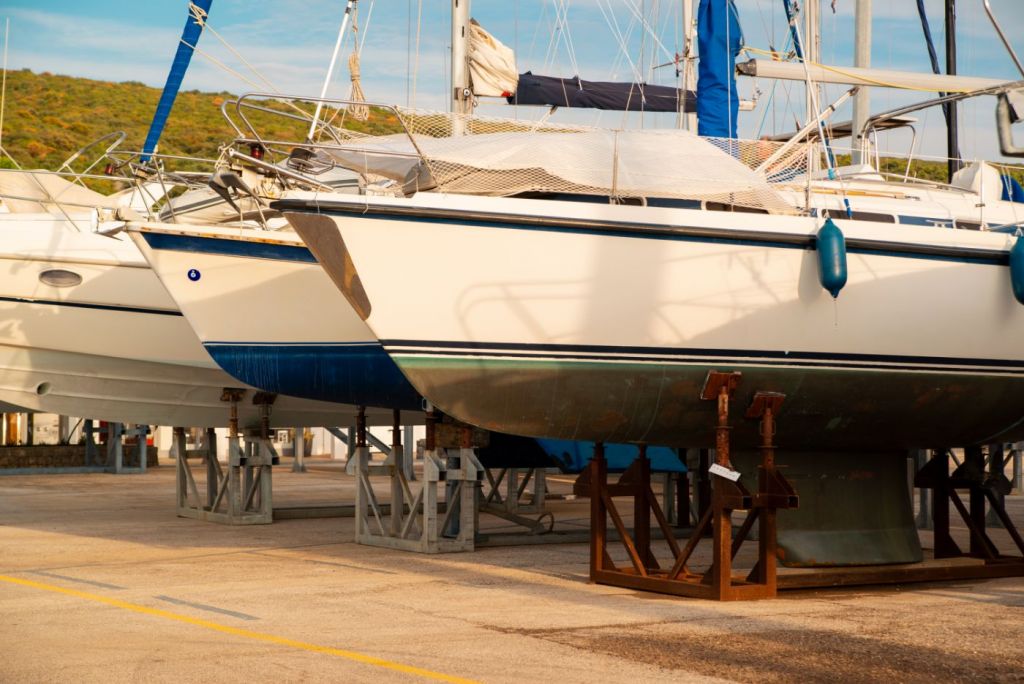
On this page:
Pros and Cons of 13 Types of Keel
| Sailboat Keel Types | Pros | Cons |
|---|---|---|
| Full-length keel | Increased stability, durability, and better tracking | Reduced maneuverability and slower speeds |
| Fin keel | Improved performance, maneuverability, and ease of maintenance | Less stability, structural vulnerability, less comfortable |
| Bulb keel | Excellent stability, speed and agility, upwind sailing | Increased maintenance, deeper draft |
| Canting keel | Increased stability, enhanced performance and versatility | Complexity and cost, increased vulnerability to grounding |
| Centerboard | Flexibility in navigating shallow waters, and adjustable performance | Less stability, regular maintenance, and reduced interior space |
| Swing keel | Versatility and ease of transport | Reduced performance, additional maintenance, and extra weight |
| Wing keel | Shallow draft, good upwind performance, and ease of grounding and recovery | Reduced pointing ability, increased leeway, increased maintenance |
| Bilge keel | Shallow draft, low maintenance, self-righting, beaching ability | Reduced performance, larger heeling angle, less stability |
| Daggerboard | Improved maneuverability, ease of maintenance, lighter in weight | Limited righting moment, reduced space, water noise |
| Fixed keel | Better stability, improved upwind performance, low-maintenance | Depth, less maneuverable at slower speeds, heavier and harder to trailer |
| Lifting keel | Versatility, improved performance, easier transportation | Maintenance and complexity, added weight |
| T-keel | Improved stability and upwind performance | Larger draft and vulnerability to grounding |
| Scheel keel | Stability, shallow draft, and efficient upwind sailing | Decreased speed and increased maintenance |
If you're curious what these keel types look like, here's our illustrated guide on sailboat keels.
-
Full-length keel: Full-length keels run the entire length of the boat. They offer excellent stability and are popular among offshore cruisers who require a solid, rugged sailboat. Full keeled boats are better suited for heavy weather, but they may be slower due to their weight and drag.
-
Fin keel: Fin keels are thinner and generally used for racing, as they provide a good balance between speed and stability. Their reduced drag means faster speeds but might be less stable compared to full-length keels in heavy seas.
-
Bulb keel: A bulb keel features a heavy, rounded weight at the bottom of the fin keel. This extra weight lowers the boat's center of gravity and provides additional stability without significantly increasing drag.
-
Canting keel: A canting keel is a high-performance feature that can pivot from side to side, allowing the boat to maintain optimal stability while heeling over on its side to maximize speed in racing scenarios.
-
Centerboard: This keel type features a retractable board that can be lowered for sailing upwind and raised in shallow waters. Centerboards are often found on smaller boats and dinghies.
-
Swing keel: Swing keels operate on a hinge, swinging up and down to adjust the boat's draft. They balance the benefits of a larger keel with the convenience of a shallow draft for docking and beaching.
-
Wing keel: Wing keels are similar to bulb keels but with two small wings on either side of the bulb. These wings increase the effective surface area, offering better stability and shallower draft capabilities, ideal for coastal cruising.
-
Bilge keel: Bilge keels are found on boats with two smaller keels on either side of the hull rather than a single central keel. This design is most commonly used in tidal waters and on small fishing boats, allowing the boat to sit upright when grounded during low tide.
-
Daggerboard: Similar to a centerboard, a daggerboard is a non-weighted, removable board that slides vertically through a slot in the hull. This type is also commonly seen on dinghies and smaller sailboats.
-
Fixed keel: Fixed keel provides good stability and is less prone to damage than other keel types. However, it can limit the boat's ability to sail in shallow waters and may make it more difficult to trailer the boat.
-
Lifting keel: A lifting keel can be raised or lowered, providing both the benefits of a deep keel for improved stability and performance and a shallow draft for easier access to shallow waters and docking.
-
T-keel: T-keels provide improved stability and upwind performance, which can be desirable for sailors. However, their larger draft and vulnerability to grounding should be considered when deciding if this keel type is the right choice for your sailing adventures.
-
Scheel keel: This offers unique benefits, and it could be an excellent choice for your sailboat if you prioritize stability, shallow draft, and efficient upwind sailing. However, you should consider the potential drawbacks, such as decreased speed and increased maintenance, before making a final decision.
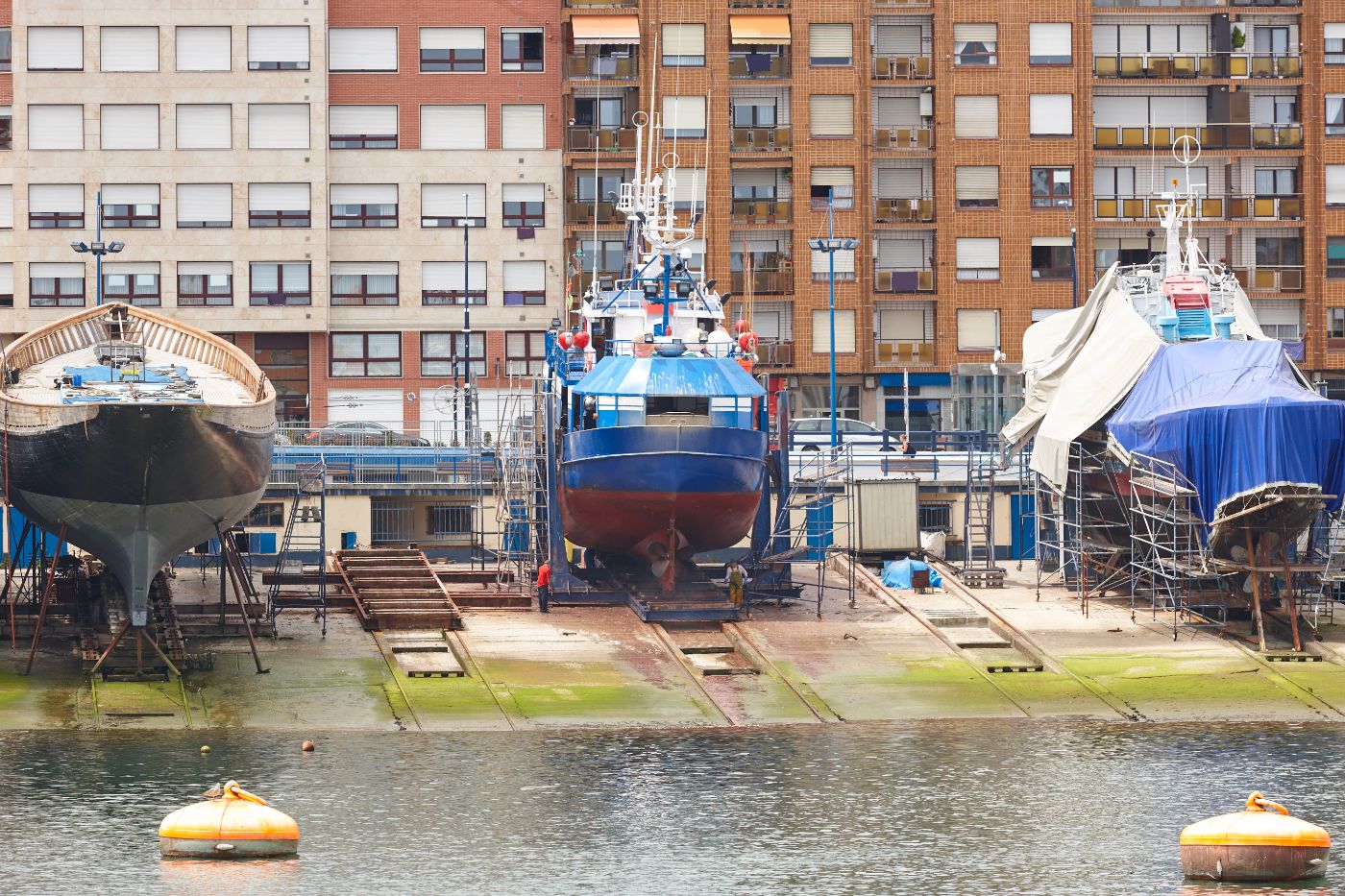
Full Keel
Pros of full keel
A full keel has several advantages that make it an appealing option for many sailors. First and foremost, it offers exceptional stability, which is particularly important when you're out at sea for extended periods. With a full keel, your sailboat can better resist the forces acting on the sails, ensuring a smoother and safer journey.
Another significant benefit is the durability of a full keel. Because of the large surface area and the way it's constructed, full keels tend to be very strong and resilient, making them perfect for long-distance cruising. Additionally, this type of keel provides excellent tracking, helping your sailboat stay on course in various conditions.
Lastly, full keel sailboats are less likely to be damaged when grounding, as the keel's large surface area allows for better weight distribution. This characteristic can be especially useful when navigating shallow waters or exploring uncharted territories.
Cons of full keel
Despite the many advantages of a full keel, it also has some drawbacks. One of the most noticeable disadvantages is its effect on sailboat performance. Full keels tend to be less maneuverable than other keel types, which can be a drawback in tight situations or when you need to make quick adjustments during sailing.
Another downside is the increased wetted surface area, which leads to higher drag and slower speeds when compared to other keel types, such as fin keels. This reduced efficiency can be a concern, especially for those who prioritize performance and speed on their sailing journeys.
Additionally, full keel sailboats may be more challenging to maneuver in tight spaces, such as crowded marinas, due to their reduced maneuverability and larger turning radius. This can make docking and mooring more complex, particularly for inexperienced sailors.
Fin Keel
Pros of fin keel
Fin keels hold several advantages for sailors. First, they offer improved performance. A fin keel's streamlined shape cuts through the water more efficiently, allowing sailboats to reach higher speeds with less drag. Moreover, fin keels generally provide better upwind performance than other keel types.
Their maneuverability is another significant benefit. Fin keels allow sailboats to turn more quickly and easily, making them nimble in tight spaces and responsive to the helm. Additionally, they typically have a reduced draft, meaning they can navigate shallow waters more effectively than boats with deeper keels.
Lastly, fin keels are popular for their ease of maintenance. Since they're typically bolted onto the hull, routine inspections and potential repairs are relatively straightforward and accessible.
Cons of fin keel
Despite the benefits, there are a few drawbacks to consider when it comes to fin keels. First, they tend to have less stability than full or bilge keels. Their slender design and reduced weight can make them more prone to sudden heeling, which some sailors may find uncomfortable or disconcerting.
Another potential issue is structural vulnerability. If a fin keel strikes a submerged obstacle, such as a rock or shipping container, it may suffer damage or even become dislodged, which could pose a significant risk to the integrity of the boat. This stands in contrast to more robust full keels, which can better absorb the impact of groundings or collisions.
Lastly, fin keels are sometimes considered less comfortable for cruising sailors. Due to their design, boats with fin keels can experience more motion (both side-to-side and up and down) in rough seas, potentially leading to discomfort or seasickness for the crew.

Bulb Keel
A bulb keel is a type of sailboat keel that features a streamlined fin with a bulb-shaped weight at the bottom. This design aims to improve the boat's performance, especially in racing conditions. In this section, we will explore the pros and cons of bulb keels.
Pros of bulb keel
Stability: The main advantage of a bulb keel is its ability to provide excellent stability. The bulb's weight is concentrated at its lowest point, which lowers the center of gravity of your sailboat. This design helps keep the boat upright and stable when sailing, especially in strong winds.
Performance: Bulb keels contribute to a sailboat's overall performance by reducing drag. The streamlined shape of the fin and the placement of the bulbous weight make it easier for your boat to glide through the water, increasing your overall speed and agility when sailing.
Upwind sailing: A bulb keel allows your sailboat to sail more effectively upwind. By reducing leeway and maintaining a consistent course, your boat can navigate better through a variety of wind conditions.
Cons of bulb keel
Maintenance: One potential downside of a bulb keel is the increased maintenance required. The bulbs can be more prone to collecting marine growth, which may necessitate regular cleaning and antifouling treatments to maintain peak performance.
Depth: Bulb keels, due to their design, have a deeper draft than other keel types. This means that your sailboat might struggle in shallow waters or require extra diligence while sailing in areas with submerged obstacles or coral reefs.
Canting Keel
Pros of canting keel
Canting keels are a popular choice among performance-oriented sailors due to their remarkable benefits in several areas. They offer increased stability and enhanced performance, especially when sailing upwind. This type of keel allows the boat to maintain a more upright position when healing, reducing drag and improving your overall speed and efficiency on the water.
Moreover, canting keels are adjustable, which allows you to alter the keel angle depending on the wind conditions and desired performance. This flexibility can make a significant difference in how your boat performs on the water. Another advantage of canting keels is their improved handling characteristics, which make them easier to maneuver in various conditions.
Cons of canting keel
Despite the many advantages, there are also some notable drawbacks to using a canting keel. One significant downside is their complexity and cost. These keels often require sophisticated engineering and systems, which can drive up the overall price of your boat and may require more maintenance and repairs over time.
Another potential issue with canting keels is their increased vulnerability to grounding. Since the keel can extend deeper beneath the boat, there is a higher risk of hitting obstacles or running aground, especially in shallow waters or unknown territories.
Lastly, canting keels can contribute to changes in the boat's handling characteristics, particularly when sailing downwind. While their adjustability may enhance upwind performance, it may also lead to instability and increased difficulty controlling your boat in heavy downwind conditions.
Centreboard
Pros of the centerboard
A centerboard is a movable keel that can be retracted or lowered to provide stability and balance to your sailboat. Here are some benefits you can enjoy with a centerboard:
- Shallow draft: With a centerboard, you can easily navigate shallow waters and get closer to shore. This is particularly useful for exploring coves, anchorages, and beaching your boat.
- Adjustable performance: By adjusting the position of the centerboard, you can fine-tune your sailboat's performance based on the current sailing conditions.
- Easier transport and storage: Retractable centerboards make it simple to trailer your sailboat and store it in tight spaces without worrying about a fixed keel's height or depth.
- Grounding protection: In case of accidental grounding, a centerboard can help minimize potential damage by absorbing the impact instead of transferring it to your boat's hull.
If you're torn between centerboard, swing, and fixed keels, here's our in-depth article on their pros and cons.
Cons of the centerboard
Despite the advantages, centerboards also come with some drawbacks that you should consider:
- Less stability: When compared to fixed keels, centerboards offer less stability, especially for larger sailboats. This may lead to reduced performance in rough waters or strong winds.
- Maintenance: Centerboards require regular maintenance to ensure they remain functional and efficient. This may include cleaning, lubricating, and inspecting the related components.
- Complexity: The moving parts and additional mechanisms in a centerboard system can be more complex than a fixed keel, potentially increasing the likelihood of mechanical issues.
- Reduced interior space: Depending on your sailboat's design, the presence of a centerboard trunk may limit the available interior space, impacting your comfort and storage options.
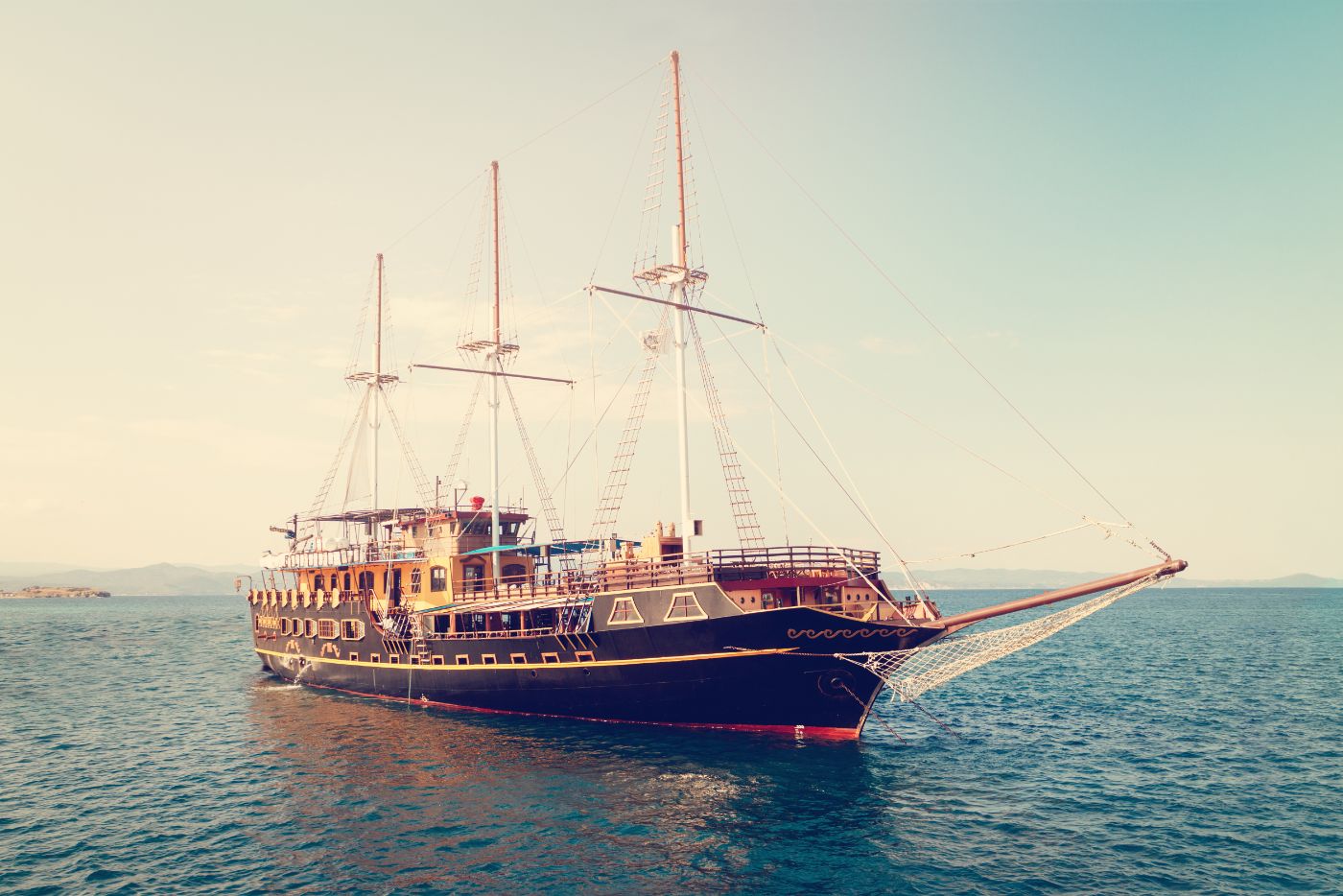
Swing Keel
The swing keel is a type of sailboat keel that essentially pivots on a hinge or bolt, allowing the keel to swing up or down as needed. This feature grants a sailboat with a swing keel the ability to adjust its performance and stability depending on the sailing conditions or water depth. Let's discuss the pros and cons of swing keels in detail.
Pros of swing keel
-
Versatility: The swing keel's ability to pivot grants your sailboat the capability to navigate shallow waters and safely beach your boat without getting stuck. This is advantageous for exploring coastal areas and coves.
-
Adjustability: Swing keels provide the opportunity for better control over your boat's performance. By adjusting the keel angle, you can find the right balance of stability and speed tailored to your sailing experience and conditions.
-
Trailerable: A sailboat with a swing keel can be easily trailered and transported, as the keel can be retracted, reducing the boat's weight, draft, and overall dimensions.
-
Ease of maintenance: Swing keels are often easier to maintain and repair, as they can be retracted for inspection or servicing without having to haul out the entire boat.
Cons of swing keel
-
Reduced performance: A trade-off with the swing keel's versatility is that it generally doesn't offer the same level of performance as a fixed keel sailboat, especially when it comes to upwind ability or pointing.
-
Additional complexity: The presence of a pivot point and moving parts can make swing keels more prone to wear or damage. This can lead to additional maintenance requirements or repairs if not properly cared for.
-
Increased weight: Given the swing keel's construction, materials, and additional hardware, it can add extra weight to your boat compared to other keel types. This may affect your boat's overall performance.
-
Potential leaks: Like any keel with moveable parts, a swing keel can introduce the risk of water ingress if the seals or hull are not properly maintained.
Wing Keel
Pros of wing keel
The wing keel is an innovative design that has gained popularity among sailors due to its unique features and benefits. One of the main advantages of this keel type is its shallow draft. The horizontal wing allows the keel to have a larger surface area without going as deep as a fin keel of the same size, making it ideal for sailboats navigating shallow waters.
Another benefit of the wing keel is its relatively good upwind performance. While not as efficient as a fin keel, it still performs well in many sailing conditions, offering a great balance between maneuverability and stability.
The ease of grounding and recovery is another plus for the wing keel. Since it has a relatively shallow draft, you are less likely to hit the seabed when navigating shallow waters. Furthermore, if the boat does become grounded, the wing keel design makes it easier to refloat.
Cons of wing keel
However, the wing keel is not without its drawbacks. The most notable disadvantage of this design is its reduced pointing ability compared to fin keels. The wing keel may struggle to sail as close to the wind as a similarly-sized sailboat with a fin keel, which can be a disadvantage when racing or sailing in tight spaces.
A wing keel sailboat may also be prone to increased leeway due to the lower depth and surface area of the keel. This can make the boat more difficult to control in strong winds or challenging sea conditions.
Another issue to consider is the maintenance and cleaning of the wing keel. Due to the horizontal wings, it may be harder to access and clean the keel properly, leading to increased fouling or potential damage.

Bilge Keel
Bilge keels are an interesting combination of two smaller keels mounted on either side of the hull, which provide stability and added performance benefits in certain conditions. In this section, we will explore the pros and cons of bilge keels on sailboats.
Pros of bilge keel
- Shallow draft: Bilge keels allow you to access shallow water areas, expanding your cruising options. The dual keel design keeps your boat stable in shallow waters, making it ideal for exploring remote destinations, such as tidal estuaries or hidden coves.
- Low maintenance: Compared to other keel types like fin keels or lifting keels, bilge keels require less maintenance. They are sturdy and simpler to maintain due to their fixed position.
- Self-righting: With bilge keels, your sailboat has a natural ability to self-right after a capsize. Their wide footprint provides additional support and stability, reducing the chances of a full capsize.
- Beaching ability: Bilge keel boats can safely dry out on the beach or tidal flats without tipping, making it easier for you to conduct maintenance or give the hull a thorough clean.
Cons of bilge keel
- Reduced performance: While bilge keels offer stability and shallow draft benefits, they can reduce your sailboat's performance in certain conditions. They create more drag, causing your boat to be slower and less agile than boats with fin keels.
- Heeling angle limitations: Due to their wide footprint, bilge keel sailboats experience a larger heeling angle, which could make sailing at high speeds or in strong winds challenging.
- Less upright stability: Bilge keel boats may be less stable when sailing in extreme conditions, as the dual keel design provides less leverage for the boat to lean on compared to a deep fin keel.
Daggerboard
Pros of daggerboard
A daggerboard can enhance your sailing experience in several ways. First and foremost, it provides improved maneuverability. With a daggerboard, you can navigate through shallow waters more easily, making it ideal for exploring coastal areas and inland waterways.
Another advantage is the ease of maintenance. Daggerboards are simpler in design compared to other keel types, making them easier to maintain and repair. Additionally, they are easily retractable, allowing you to adjust the draft of your sailboat depending on the depth of the water, avoiding running aground or hitting underwater obstacles.
Daggerboards are also typically lighter in weight compared to other keel types, which contributes to better sailing performance, particularly in light wind conditions. It is also worth noting that their simple design often results in lower production costs for boat manufacturers, resulting in more affordable options for you, the buyer.
Finally, daggerboards are popular on trailer sailers due to their retractable nature, making it more convenient for you to transport your sailboat on a trailer over land when necessary.
Cons of daggerboard
Despite the various advantages, there are a few downsides to consider when it comes to daggerboards. One notable drawback is their limited righting moment. This means that sailboats with a daggerboard are generally less stable and more prone to heeling or even capsizing in rough conditions. If you frequently sail in choppy waters, this could be a significant concern for your safety.
Another downside is the space occupied by the daggerboard case inside the cabin of the boat. This can reduce the available living space, especially on smaller sailboats. In addition, daggerboards can be noisier than other keel types when sailing due to water noise around the daggerboard case.
Lastly, the lack of keel protection in boats with daggerboards makes them more vulnerable to damage by underwater obstacles. While the retractability feature might mitigate this risk somewhat, it is still essential for you to remain cautious when navigating shallow and uncharted waters.
Fixed Keel
Pros of fixed keel
A fixed keel offers numerous advantages that can make your sailing experience more enjoyable. First, fixed keels provide better stability as they have a lower center of gravity, resulting in a more comfortable ride. This is particularly beneficial when sailing in rough weather or choppy seas.
Moreover, fixed keels offer improved upwind performance compared to other keel types. The deeper draft allows the boat to generate more lift and point higher into the wind, making it faster and more efficient when sailing upwind. Additionally, these keels are low-maintenance since there are fewer moving parts to wear out or require replacement.
Lastly, fixed keel boats tend to have better handling under power. They can make precise turns and handle well in reverse, allowing for easier maneuvering in tight spaces and marinas.
Cons of fixed keel
Despite their advantages, fixed keels also come with some drawbacks. One of the main concerns is their depth, which limits the boat's ability to access shallow waters. This may restrict your sailing options, especially near shorelines or in tidal areas.
Additionally, fixed keel boats can be less maneuverable at slower speeds compared to boats with swing keels or centerboards. This can make tight turns more challenging, especially in crowded harbors or narrow waterways.
Finally, fixed keel boats are generally heavier and harder to trailer, as they require a higher towing capacity and specially designed trailers to accommodate the boat's deeper draft. This added weight can make transportation more difficult and lead to higher fuel costs for road transportation.

Lifting Keel
Pros of lifting keel
A lifting keel is a type of keel that can be raised or lowered, allowing you to adjust the depth and balance of your sailboat. When properly utilized, a lifting keel can provide a number of benefits to enhance your sailing experience.
- Versatility: A lifting keel allows you to sail in shallow waters as well as access ports and harbors with limited depth. This is especially useful for exploring coastal areas and navigating tidal waters.
- Improved performance: By adjusting the depth of the keel, you can optimize your boat's performance in various sailing conditions. This can result in better speed, stability, and upwind performance.
- Easier transportation: With the ability to raise the keel, transporting your sailboat on a trailer becomes more manageable as it reduces the overall draft and height of your boat.
If you're choosing between swing or lifting keel, here's our more detailed guide on their pros and cons.
Cons of lifting keel
While a lifting keel offers several advantages, it is essential to be aware of some potential drawbacks before choosing this type of keel for your sailboat.
- Maintenance and complexity: Lifting keels typically require more maintenance due to the moving parts involved. Extra care is needed to inspect and maintain the keel's lifting mechanism, which might include a winch, cable, or hydraulic system.
- Added weight: The lifting mechanism adds weight to your boat, which can have negative effects on performance and fuel efficiency.
- Potential weaknesses: The structural integrity of a boat with a lifting keel can be compromised if it is not designed and engineered properly. This could lead to stress points or even failure in extreme situations.
T-keel
Pros of T-keel
T-keel is a unique design that has its advantages to consider. First, it offers improved stability. With a heavier weight concentrated at the bottom of the keel, your sailboat will resist heeling, maintaining a more upright position in strong winds. This added stability allows for better control and a smoother ride when sailing.
Another pro of the T-keel is its powerful upwind performance. The shape and design of this keel allow for a low center of gravity while minimizing drag. This combination helps your sailboat efficiently point into the wind, allowing for a quicker upwind speed. This increased performance can make a difference when racing or navigating through tight spaces.
Cons of T-keel
However, T-keels are not without their drawbacks. One potential downside is that T-keel boats tend to have a larger draft than other types of keels, meaning they require deeper water for sailing. This can restrict your ability to sail in shallow waters around bays or near shorelines, limiting your access to certain areas.
Another drawback of T-keels is that they can be more prone to grounding due to their design. If you accidentally run aground or hit an underwater object, the T-keel may be more likely to experience damage or become difficult to dislodge. This can lead to costly repairs or complications when trying to free your sailboat.
Scheel Keel
The Scheel Keel is a unique keel type that was designed by naval architect Henry Scheel in the 1970s. This keel offers a compromise between performance and stability, making it a popular choice for many sailboat owners. In this section, we'll discuss the pros and cons of the Scheel Keel to help you decide if it's the right choice for your sailing needs.
Pros of Scheel keel
-
Shallow draft: One of the main advantages of the Scheel Keel is its shallow draft. This allows you to navigate in shallower waters, making it easier to access more anchorage spots and enjoy cruising in coastal areas.
-
Stability: With its wide, flat bottom, the Scheel Keel provides good stability, making your sailboat feel more secure and comfortable in various conditions. This can be especially beneficial for less experienced sailors or those who prefer a more stable ride.
-
Efficient upwind performance: The Scheel Keel is designed to improve upwind performance without sacrificing stability. This means you can sail more efficiently and at a better angle to the wind, which can be a noticeable advantage in many sailing situations.
Cons of Scheel keel
-
Potential for decreased speed: Due to its wide, flat bottom, the Scheel Keel can create more drag, which may decrease your overall speed in comparison to other keel types. While the Scheel Keel offers improved upwind performance, it may not be the best choice for you if maximizing speed is your primary concern.
-
Maintenance: The unique shape of the Scheel Keel can make it more susceptible to damage, particularly if you frequently sail in shallow waters or near shorelines with rocks and other hazards. As a result, you might need to pay closer attention to the maintenance and repair of your keel.
-
Limited availability: While many sailors appreciate the benefits of the Scheel Keel, it's not as widely available as some other keel designs. This could make it more difficult for you to find a sailboat with a Scheel Keel or to have one retrofitted to your current boat.
Did you find the answer to your specific question?
👍 0 👎 0
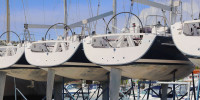

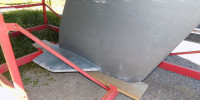
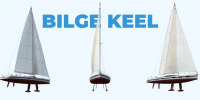
Leave a comment